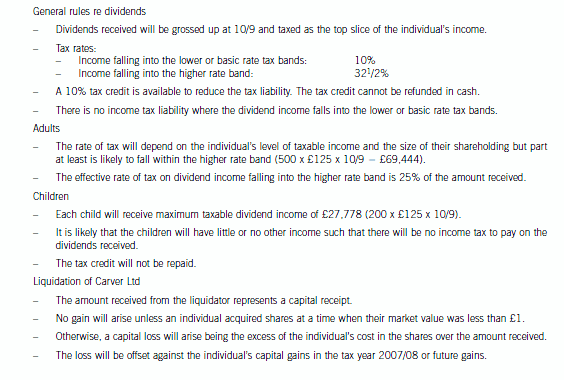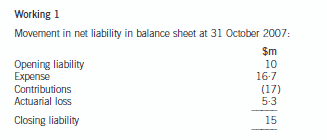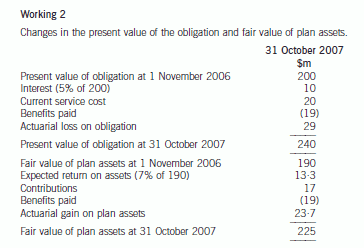福建省考生:ACCA国际注册会计师的缴费流程是怎么样的呢?
发布时间:2020-01-10
为了犒劳经历了一场“恶战”的ACCAer们,也为了犒劳沉浸在2020年新年到来的喜悦中但还想报名ACCA机考的你,51题库考试学习网帮你们准备了关于一些ACCA缴费流程,大家通常会遇到的部分问题:
ACCA证书是什么?
ACCA在国内被称为"国际注册会计师",是全球含金量高的财会金融领域的证书之一,在国际上的认可范围很广的财务人员资格证书。ACCA全称:英国特许公认会计师公会(The Association of Chartered
Certified Accountants)。
ACCA证书的优点是什么?
他的优点分为以下几类:首先是在报名条件上门槛不高,不像国内其他类似的高级会计师一样有报考专业和工作年限的要求,它的报考并无专业限制;
其次,它的知识架构完整且基础,即便是无财会背景人士通过学习可以了解财务领域所有知识与技能;
最后,ACCA证书认可雇主皆为全球五百强企业。
拥有ACCA认证,就拥有了全球求职"通行证"
(一)ACCA考试费用分为哪几个部分?
1、 ACCA注册费
首先要注册成为ACCA的学员,此项有一个需要一次性即时缴纳的注册费用,2019年首次注册费和重新注册费均为£79。
2、 ACCA年费
注册成ACCA学员后,您需要每年缴纳年费,以保持学员/会员身份。2019年官网公布的学员年费为£105,以后年费以ACCA官网的公布为准,可能会有调整(2019年5月10日后注册的学生可以免除2019年的年费)。 2019年年底,您需要缴纳2020年的年费,以保持学员/会员身份。同时,此后每年年底,您都需要缴纳下一年的年费了,您如果没有在规定时间内及时付清所欠的任何费用(年费、免试费等)都将被除名。请您登录ACCA全球官网在MY ACCA中查看自己是否有任何欠费账单并及时支付。
3、 ACCA考试费用
考试费用根据考生报考时间不同,有所区别。报考时段分为提前报名时段,常规报名时段和后期报名时段。具体费用敬请参照费用标准。免试课程要交纳免试费,免试费与提前报名时段考试费相同;补考需另交费,费用与考试费用相同。由于每人免试科目不同,所以教材和培训费用因人而异。
4、ACCA学习的费用
1. 各机构的教材及练习册(ACCA官方只有大纲,没有官方教材)
2. 网课。
3. 按科目划分,每门科目几百至几千不等,总计学费约2-4万。主要还是在必须缴纳的费用、课本费,在校生的学费或是网课费用。
(二) 为什么MyACCA登陆不上?为什么网页老是无法跳转到支付页面?
答:因为官网会自动识别您的IP地址并跳转到ACCA中国官网。但缴费和完成CPD的提交必须在ACCA全球官网登录MyACCA后进行操作
(三) 没有及时缴纳年费会有什么影响?
答:如果会员没有在规定时间内及时支付所欠的费用(包括年费、会员申请费等),ACCA将会锁定你的个人账号,无法登录,收回你的ACCA学员或会员资格。
(四)缴费过程中,系统经常出现Bug,导致不能顺利付费,这种情况下该怎么处理?
答:建议使用Chrome或者火狐浏览器并清空历史记录和浏览器的Cookies,或者使用手机等移动设备登陆MyACCA,尽可能避开网络繁忙时段,提高支付的成功率。同时,您也可致电英国总部24小时服务热线+44 141 582 2000提供个人相关信息直接通过电话进行缴费。
(五)我的支付宝/银行卡显示已扣款,但是在MyACCA系统上显示没有支付成功,怎么办?
答:支付宝/银行卡扣款成功不一定表示年费已成功支付。成功完成缴费后MyACCA的Account balance应该显示为0。 你的个人账户被成功扣款后,有可能需要等1-3天才能在ACCA系统上显示到账。如果超过3天以上您的Account balance仍然显示有欠费,则表示支付没有成功,相关费用会在2-15个工作日内退回到您的信用卡或支付宝。您可以再收到退款后,再次尝试支付即可。
(六)支付未成功,被退还的费用显示和原支付金额不同,为什么?
答:由于支付金额和退回金额都会按照当天汇率转化为英镑支付或退款,每天的汇率波动会导致费用的差异。
(七)不交年费是否会影响考试?
答:年费的缴纳一般是在年底11月-12月,在此期间,可正常进行12月考试,不过如果逾期未缴纳年费,ACCA官方将会锁定你的个人账号,无法登录。
(八)如果忘交年费ACCA资格被取消怎么办?
已被除名的会员/学员可以向协会写封邮件,表明自己的意愿并索要电子版的重新注册表格。 ACCA学员需要缴纳当年所欠的ACCA考试费用以及重新注册费,并填写重新注册表后,传真或致电英国总部;ACCA会员则需要缴纳过往欠费及重新注册费,并填写重新注册表后,传真或致电英国总部。 更多疑问,可致电ACCA中国代表处。
以上就是关于ACCA缴费遇到哪些问题的相关内容。想了解更多关于2019年ACCA培训课程,欢迎加入关注51题库考试学习网
下面小编为大家准备了 ACCA考试 的相关考题,供大家学习参考。
John Pentanol was appointed as risk manager at H&Z Company a year ago and he decided that his first task was to examine the risks that faced the company. He concluded that the company faced three major risks, which he assessed by examining the impact that would occur if the risk were to materialise. He assessed Risk 1 as being of low potential impact as even if it materialised it would have little effect on the company’s strategy. Risk 2 was assessed as being of medium potential impact whilst a third risk, Risk 3, was assessed as being of very high potential impact.
When John realised the potential impact of Risk 3 materialising, he issued urgent advice to the board to withdraw from the activity that gave rise to Risk 3 being incurred. In the advice he said that the impact of Risk 3 was potentially enormous and it would be irresponsible for H&Z to continue to bear that risk.
The company commercial director, Jane Xylene, said that John Pentanol and his job at H&Z were unnecessary and that risk management was ‘very expensive for the benefits achieved’. She said that all risk managers do is to tell people what can’t be done and that they are pessimists by nature. She said she wanted to see entrepreneurial risk takers in H&Z and not risk managers who, she believed, tended to discourage enterprise.
John replied that it was his job to eliminate all of the highest risks at H&Z Company. He said that all risk was bad and needed to be eliminated if possible. If it couldn’t be eliminated, he said that it should be minimised.
(a) The risk manager has an important role to play in an organisation’s risk management.
Required:
(i) Describe the roles of a risk manager. (4 marks)
(ii) Assess John Pentanol’s understanding of his role. (4 marks)
(b) With reference to a risk assessment framework as appropriate, criticise John’s advice that H&Z should
withdraw from the activity that incurs Risk 3. (6 marks)
(c) Jane Xylene expressed a particular view about the value of risk management in H&Z Company. She also said that she wanted to see ‘entrepreneurial risk takers’.
Required:
(i) Define ‘entrepreneurial risk’ and explain why it is important to accept entrepreneurial risk in business
organisations; (4 marks)
(ii) Critically evaluate Jane Xylene’s view of risk management. (7 marks)
(a) (i) Roles of a risk manager
Providing overall leadership, vision and direction, involving the establishment of risk management (RM) policies,
establishing RM systems etc. Seeking opportunities for improvement or tightening of systems.
Developing and promoting RM competences, systems, culture, procedures, protocols and patterns of behaviour. It is
important to understand that risk management is as much about instituting and embedding risk systems as much as
issuing written procedure. The systems must be capable of accurate risk assessment which seem not to be the case at
H&Z as he didn’t account for variables other than impact/hazard.
Reporting on the above to management and risk committee as appropriate. Reporting information should be in a form
able to be used for the generation of external reporting as necessary. John’s issuing of ‘advice’ will usually be less useful
than full reporting information containing all of the information necessary for management to decide on risk policy.
Ensuring compliance with relevant codes, regulations, statutes, etc. This may be at national level (e.g. Sarbanes Oxley)
or it may be industry specific. Banks, oil, mining and some parts of the tourism industry, for example, all have internal
risk rules that risk managers are required to comply with.
[Tutorial note: do not reward bullet lists. Study texts both use lists but question says ‘describe’.]
(ii) John Pentanol’s understanding of his role
John appears to misunderstand the role of a risk manager in four ways.
Whereas the establishment of RM policies is usually the most important first step in risk management, John launched
straight into detailed risk assessments (as he saw it). It is much more important, initially, to gain an understanding of
the business, its strategies, controls and risk exposures. The assessment comes once the policy has been put in place.
It is important for the risk manager to report fully on the risks in the organisation and John’s issuing of ‘advice’ will usually
be less useful than full reporting information. Full reporting would contain all of the information necessary for
management to decide on risk policy.
He told Jane Xylene that his role as risk manager involved eliminating ‘all of the highest risks at H&Z Company’ which
is an incorrect view. Jane Xylene was correct to say that entrepreneurial risk was important, for example.
The risk manager is an operational role in a company such as H&Z Company and it will usually be up to senior
management to decide on important matters such as withdrawal from risky activities. John was being presumptuous
and overstepping his role in issuing advice on withdrawal from Risk 3. It is his job to report on risks to senior
management and for them to make such decisions based on the information he provides.
(b) Criticise John’s advice
The advice is based on an incomplete and flawed risk assessment. Most simple risk assessment frameworks comprise at least
two variables of which impact or hazard is only one. The other key variable is probability. Risk impact has to be weighed
against probability and the fact that a risk has a high potential impact does not mean the risk should be avoided as long as
the probability is within acceptable limits. It is the weighted combination of hazard/impact and probability that forms the basis
for meaningful risk assessment.
John appears to be very certain of his impact assessments but the case does not tell us on what information the assessment
is made. It is important to recognise that ‘hard’ data is very difficult to obtain on both impact and probability. Both measures
are often made with a degree of assumption and absolute measures such as John’s ranking of Risks 1, 2 and 3 are not as
straightforward as he suggests.
John also overlooks a key strategic reason for H&Z bearing the risks in the first place, which is the return achievable by the
bearing of risk. Every investment and business strategy carries a degree of risk and this must be weighed against the financial
return that can be expected by the bearing of the risk.
(c) (i) Define ‘entrepreneurial risk’
Entrepreneurial risk is the necessary risk associated with any new business venture or opportunity. It is most clearly seen
in entrepreneurial business activity, hence its name. In ‘Ansoff’ terms, entrepreneurial risk is expressed in terms of the
unknowns of the market/customer reception of a new venture or of product uncertainties, for example product design,
construction, etc. There is also entrepreneurial risk in uncertainties concerning the competences and skills of the
entrepreneurs themselves.
Entrepreneurial risk is necessary, as Jane Xylene suggested, because it is from taking these risks that business
opportunities arise. The fact that the opportunity may not be as hoped does not mean it should not be pursued. Any
new product, new market development or new activity is a potential source of entrepreneurial risk but these are also the
sources of future revenue streams and hence growth in company value.
(ii) Critically evaluate Jane Xylene’s view of risk management
There are a number of arguments against risk management in general. These arguments apply against the totality of risk
management and also of the employment of inappropriate risk measures.
There is a cost associated with all elements of risk management which must obviously be borne by the company.
Disruption to normal organisational practices and procedures as risk systems are complied with.
Slowing (introducing friction to) the seizing of new business opportunities or the development of internal systems as they
are scrutinised for risk.
‘STOP’ errors can occur as a result of risk management systems where a practice or opportunity has been stopped on
the grounds of its risk when it should have been allowed to proceed. This may be the case with Risk 3 in the case.
(Contrast with ‘GO’ errors which are the opposite of STOP errors.)
There are also arguments for risk management people and systems in H&Z. The most obvious benefit is that an effective
risk system identifies those risks that could detract from the achievements of the company’s strategic objectives. In this
respect, it can prevent costly mistakes by advising against those actions that may lose the company value. It also has
the effect of reassuring investors and capital markets that the company is aware of and is in the process of managing
its risks. Where relevant, risk management is necessary for compliance with codes, listing rules or statutory instruments.
(b) The directors of Carver Ltd are aware that some of the company’s shareholders want to realise the value in their
shares immediately. Accordingly, instead of investing in the office building or the share portfolio they are
considering two alternative strategies whereby, following the sale of the company’s business, a payment will be
made to the company’s shareholders.
(i) Liquidate the company. The payment by the liquidator would be £126 per share.
(ii) The payment of a dividend of £125 per share following which a liquidator will be appointed. The payment
by the liquidator to the shareholders would then be £1 per share.
The company originally issued 20,000 £1 ordinary shares at par value to 19 members of the Cutler family.
Following a number of gifts and inheritances there are now 41 shareholders, all of whom are family members.
The directors have asked you to attend a meeting to set out the tax implications of these two alternative strategies
for each of the two main groups of shareholders: adults with shareholdings of more than 500 shares and children
with shareholdings of 200 shares or less.
Required:
Prepare notes explaining:
– the amount chargeable to tax; and
– the rates of tax that will apply
in respect of each of the two strategies for each of the two groups of shareholders ready for your meeting
with the directors of Carver Ltd. You should assume that none of the shareholders will have any capital
losses either in the tax year 2007/08 or brought forward as at 5 April 2007. (10 marks)
Note:
You should assume that the rates and allowances for the tax year 2006/07 will continue to apply for the
foreseeable future.



(b) (i) Discusses the principles involved in accounting for claims made under the above warranty provision.
(6 marks)
(ii) Shows the accounting treatment for the above warranty provision under IAS37 ‘Provisions, Contingent
Liabilities and Contingent Assets’ for the year ended 31 October 2007. (3 marks)
Appropriateness of the format and presentation of the report and communication of advice. (2 marks)
(b) Provisions – IAS37
An entity must recognise a provision under IAS37 if, and only if:
(a) a present obligation (legal or constructive) has arisen as a result of a past event (the obligating event)
(b) it is probable (‘more likely than not’), that an outflow of resources embodying economic benefits will be required to settle
the obligation
(c) the amount can be estimated reliably
An obligating event is an event that creates a legal or constructive obligation and, therefore, results in an enterprise having
no realistic alternative but to settle the obligation. A constructive obligation arises if past practice creates a valid expectation
on the part of a third party. If it is more likely than not that no present obligation exists, the enterprise should disclose a
contingent liability, unless the possibility of an outflow of resources is remote.
The amount recognised as a provision should be the best estimate of the expenditure required to settle the present obligation
at the balance sheet date, that is, the amount that an enterprise would rationally pay to settle the obligation at the balance
sheet date or to transfer it to a third party. This means provisions for large populations of events such as warranties, are
measured at a probability weighted expected value. In reaching its best estimate, the entity should take into account the risks
and uncertainties that surround the underlying events.
Expected cash outflows should be discounted to their present values, where the effect of the time value of money is material
using a risk adjusted rate (it should not reflect risks for which future cash flows have been adjusted). If some or all of the
expenditure required to settle a provision is expected to be reimbursed by another party, the reimbursement should be
recognised as a separate asset when, and only when, it is virtually certain that reimbursement will be received if the entity
settles the obligation. The amount recognised should not exceed the amount of the provision. In measuring a provision future
events should be considered. The provision for the warranty claim will be determined by using the expected value method.
The past event which causes the obligation is the initial sale of the product with the warranty given at that time. It would be
appropriate for the company to make a provision for the Year 1 warranty of $280,000 and Year 2 warranty of $350,000,
which represents the best estimate of the obligation (see Appendix 2). Only if the insurance company have validated the
counter claim will Macaljoy be able to recognise the asset and income. Recovery has to be virtually certain. If it is virtually
certain, then Macaljoy may be able to recognise the asset. Generally contingent assets are never recognised, but disclosed
where an inflow of economic benefits is probable.
The company could discount the provision if it was considered that the time value of money was material. The majority of
provisions will reverse in the short term (within two years) and, therefore, the effects of discounting are likely to be immaterial.
In this case, using the risk adjusted rate (IAS37), the provision would be reduced to $269,000 in Year 1 and $323,000 in
Year 2. The company will have to determine whether this is material.
Appendix 1
The accounting for the defined benefit plan is as follows:



声明:本文内容由互联网用户自发贡献自行上传,本网站不拥有所有权,未作人工编辑处理,也不承担相关法律责任。如果您发现有涉嫌版权的内容,欢迎发送邮件至:contact@51tk.com 进行举报,并提供相关证据,工作人员会在5个工作日内联系你,一经查实,本站将立刻删除涉嫌侵权内容。
- 2020-01-13
- 2020-01-09
- 2020-02-26
- 2020-01-09
- 2020-01-09
- 2021-02-03
- 2020-02-27
- 2020-01-10
- 2020-03-26
- 2020-01-04
- 2020-01-09
- 2020-09-03
- 2020-02-23
- 2020-01-10
- 2020-08-12
- 2020-01-10
- 2020-09-03
- 2020-01-09
- 2020-01-10
- 2020-01-09
- 2020-09-03
- 2020-02-23
- 2020-01-10
- 2020-01-08
- 2020-09-03
- 2020-01-09
- 2020-02-22
- 2020-01-09
- 2020-01-09
- 2020-08-13